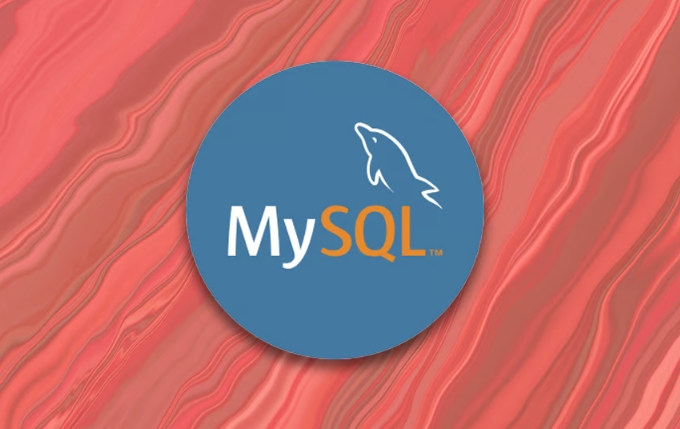There are three ways to connect Excel to MySQL database: 1. Use Power Query: After installing the MySQL ODBC driver, establish connections and import data through Excel's built-in Power Query function, and support timed refresh; 2. Use MySQL for Excel plug-in: The official plug-in provides a friendly interface, supports two-way synchronization and table import back to MySQL, and pay attention to version compatibility; 3. Use VBA ADO programming: Suitable for advanced users, and implements flexible connections and queries by writing macro code. Choose the appropriate method according to your needs and technical level. Power Query or MySQL for Excel is recommended for daily use, and VBA is better for automated processing.

Connecting Excel to MySQL database is actually not difficult, the key is to find the right method and tool. If you need to view, analyze or even update data in MySQL in Excel, there are several common ways to do it. Here are a few of the most practical ways.

Using Power Query (Excel built-in features)
Power Query is a powerful tool in Excel that can be used to import data from a variety of data sources, including MySQL.
The operation steps are as follows:

- Install MySQL ODBC driver: Connector/ODBC can be downloaded and installed from the MySQL official website
- Open Power Query in Excel (menu bar "Data" → "Get Data")
- Select "From Other Sources" → "From ODBC"
- Configure DSN or enter the connection string directly, fill in the username and password
- Select a table in the database or execute a SQL query statement
- Just load it into an Excel worksheet
The advantage of this approach is that you can refresh data regularly, keep Excel and database content synchronized without additional software.
Using MySQL for Excel Plug-in
MySQL officially provides a plug-in called MySQL for Excel , which can directly operate MySQL databases in the Excel interface.

Advantages include:
- Supports bidirectional data synchronization (read and write are possible)
- Friendly interface, suitable for those who are not familiar with programming
- You can import Excel tables back to MySQL
To use it, you must first install:
- Download MySQL Connector/Net and MySQL for Excel installation packages
- After the installation is complete, the MySQL plug-in button appears in the Data tab of Excel
- After connecting to the database, you can browse tables, import data, edit and submit changes
However, it should be noted that the compatibility of this plug-in with the new version of Excel sometimes has problems. It is recommended to check the supported version first before installing it.
Programming connections using VBA ADO (suitable for advanced users)
If you know a little VBA, you can also connect to MySQL by writing macro code.
The basic idea is:
- Reference to ADO libraries (ActiveX Data Objects)
- Write a connection string, including host, database name, user name, password and other information
- Execute a query and output the results to the worksheet
Sample code snippet:
Dim conn As Object
Set conn = CreateObject("ADODB.Connection")
conn.ConnectionString = "DRIVER={MySQL ODBC 8.0 Unicode Driver};" & _
"SERVER=localhost;" & _
"DATABASE=testdb;" & _
"USER=root;" & _
"PASSWORD=yourpass;" & _
"Option=3;"
conn.OpenAlthough this method is more flexible, the threshold is also higher, suitable for people with a certain programming foundation.
In general, depending on your needs and technical level, you can choose different methods to connect Excel and MySQL. If it is for daily use, it is recommended to use Power Query or MySQL for Excel; if you want to do automation, VBA will be more suitable.
Basically these are the methods, just choose one that you can do.
The above is the detailed content of how to connect excel to mysql database. For more information, please follow other related articles on the PHP Chinese website!

Hot AI Tools

Undress AI Tool
Undress images for free

Undresser.AI Undress
AI-powered app for creating realistic nude photos

AI Clothes Remover
Online AI tool for removing clothes from photos.

Clothoff.io
AI clothes remover

Video Face Swap
Swap faces in any video effortlessly with our completely free AI face swap tool!

Hot Article

Hot Tools

Notepad++7.3.1
Easy-to-use and free code editor

SublimeText3 Chinese version
Chinese version, very easy to use

Zend Studio 13.0.1
Powerful PHP integrated development environment

Dreamweaver CS6
Visual web development tools

SublimeText3 Mac version
God-level code editing software (SublimeText3)

Hot Topics
 Performing logical backups using mysqldump in MySQL
Jul 06, 2025 am 02:55 AM
Performing logical backups using mysqldump in MySQL
Jul 06, 2025 am 02:55 AM
mysqldump is a common tool for performing logical backups of MySQL databases. It generates SQL files containing CREATE and INSERT statements to rebuild the database. 1. It does not back up the original file, but converts the database structure and content into portable SQL commands; 2. It is suitable for small databases or selective recovery, and is not suitable for fast recovery of TB-level data; 3. Common options include --single-transaction, --databases, --all-databases, --routines, etc.; 4. Use mysql command to import during recovery, and can turn off foreign key checks to improve speed; 5. It is recommended to test backup regularly, use compression, and automatic adjustment.
 Handling NULL Values in MySQL Columns and Queries
Jul 05, 2025 am 02:46 AM
Handling NULL Values in MySQL Columns and Queries
Jul 05, 2025 am 02:46 AM
When handling NULL values ??in MySQL, please note: 1. When designing the table, the key fields are set to NOTNULL, and optional fields are allowed NULL; 2. ISNULL or ISNOTNULL must be used with = or !=; 3. IFNULL or COALESCE functions can be used to replace the display default values; 4. Be cautious when using NULL values ??directly when inserting or updating, and pay attention to the data source and ORM framework processing methods. NULL represents an unknown value and does not equal any value, including itself. Therefore, be careful when querying, counting, and connecting tables to avoid missing data or logical errors. Rational use of functions and constraints can effectively reduce interference caused by NULL.
 Aggregating data with GROUP BY and HAVING clauses in MySQL
Jul 05, 2025 am 02:42 AM
Aggregating data with GROUP BY and HAVING clauses in MySQL
Jul 05, 2025 am 02:42 AM
GROUPBY is used to group data by field and perform aggregation operations, and HAVING is used to filter the results after grouping. For example, using GROUPBYcustomer_id can calculate the total consumption amount of each customer; using HAVING can filter out customers with a total consumption of more than 1,000. The non-aggregated fields after SELECT must appear in GROUPBY, and HAVING can be conditionally filtered using an alias or original expressions. Common techniques include counting the number of each group, grouping multiple fields, and filtering with multiple conditions.
 Paginating Results with LIMIT and OFFSET in MySQL
Jul 05, 2025 am 02:41 AM
Paginating Results with LIMIT and OFFSET in MySQL
Jul 05, 2025 am 02:41 AM
MySQL paging is commonly implemented using LIMIT and OFFSET, but its performance is poor under large data volume. 1. LIMIT controls the number of each page, OFFSET controls the starting position, and the syntax is LIMITNOFFSETM; 2. Performance problems are caused by excessive records and discarding OFFSET scans, resulting in low efficiency; 3. Optimization suggestions include using cursor paging, index acceleration, and lazy loading; 4. Cursor paging locates the starting point of the next page through the unique value of the last record of the previous page, avoiding OFFSET, which is suitable for "next page" operation, and is not suitable for random jumps.
 Implementing Transactions and Understanding ACID Properties in MySQL
Jul 08, 2025 am 02:50 AM
Implementing Transactions and Understanding ACID Properties in MySQL
Jul 08, 2025 am 02:50 AM
MySQL supports transaction processing, and uses the InnoDB storage engine to ensure data consistency and integrity. 1. Transactions are a set of SQL operations, either all succeed or all fail to roll back; 2. ACID attributes include atomicity, consistency, isolation and persistence; 3. The statements that manually control transactions are STARTTRANSACTION, COMMIT and ROLLBACK; 4. The four isolation levels include read not committed, read submitted, repeatable read and serialization; 5. Use transactions correctly to avoid long-term operation, turn off automatic commits, and reasonably handle locks and exceptions. Through these mechanisms, MySQL can achieve high reliability and concurrent control.
 Handling character sets and collations issues in MySQL
Jul 08, 2025 am 02:51 AM
Handling character sets and collations issues in MySQL
Jul 08, 2025 am 02:51 AM
Character set and sorting rules issues are common when cross-platform migration or multi-person development, resulting in garbled code or inconsistent query. There are three core solutions: First, check and unify the character set of database, table, and fields to utf8mb4, view through SHOWCREATEDATABASE/TABLE, and modify it with ALTER statement; second, specify the utf8mb4 character set when the client connects, and set it in connection parameters or execute SETNAMES; third, select the sorting rules reasonably, and recommend using utf8mb4_unicode_ci to ensure the accuracy of comparison and sorting, and specify or modify it through ALTER when building the library and table.
 Calculating Database and Table Sizes in MySQL
Jul 06, 2025 am 02:41 AM
Calculating Database and Table Sizes in MySQL
Jul 06, 2025 am 02:41 AM
To view the size of the MySQL database and table, you can query the information_schema directly or use the command line tool. 1. Check the entire database size: Execute the SQL statement SELECTtable_schemaAS'Database',SUM(data_length index_length)/1024/1024AS'Size(MB)'FROMinformation_schema.tablesGROUPBYtable_schema; you can get the total size of all databases, or add WHERE conditions to limit the specific database; 2. Check the single table size: use SELECTta
 Setting up asynchronous primary-replica replication in MySQL
Jul 06, 2025 am 02:52 AM
Setting up asynchronous primary-replica replication in MySQL
Jul 06, 2025 am 02:52 AM
To set up asynchronous master-slave replication for MySQL, follow these steps: 1. Prepare the master server, enable binary logs and set a unique server-id, create a replication user and record the current log location; 2. Use mysqldump to back up the master library data and import it to the slave server; 3. Configure the server-id and relay-log of the slave server, use the CHANGEMASTER command to connect to the master library and start the replication thread; 4. Check for common problems, such as network, permissions, data consistency and self-increase conflicts, and monitor replication delays. Follow the steps above to ensure that the configuration is completed correctly.






